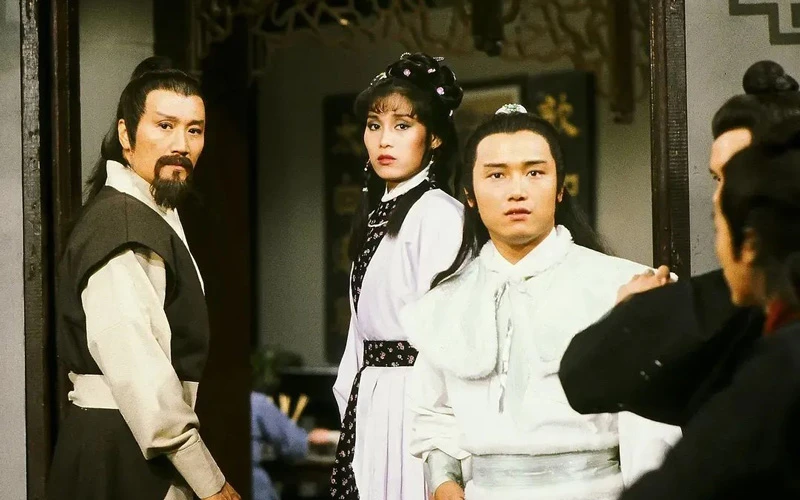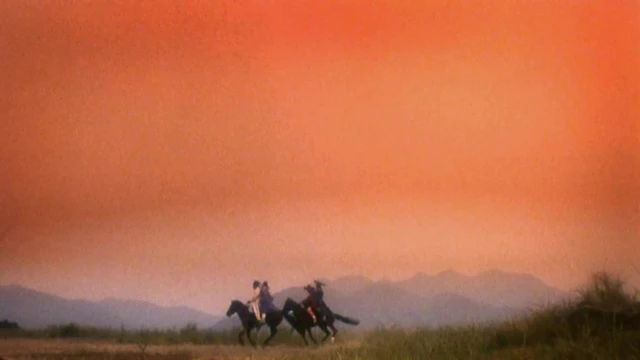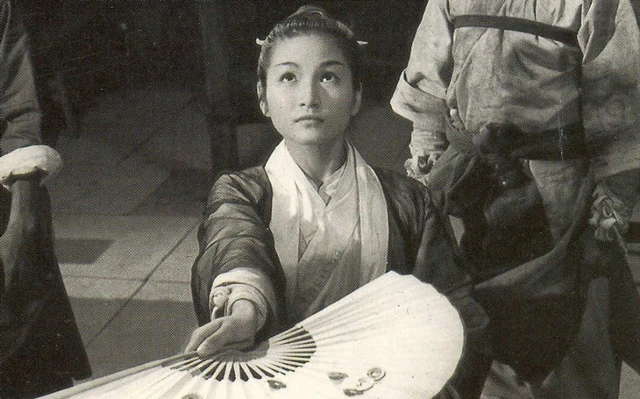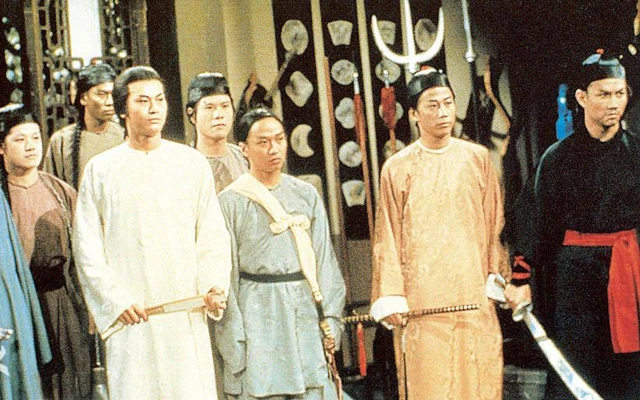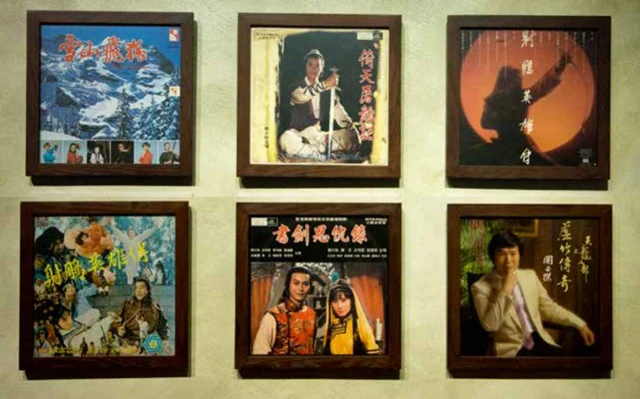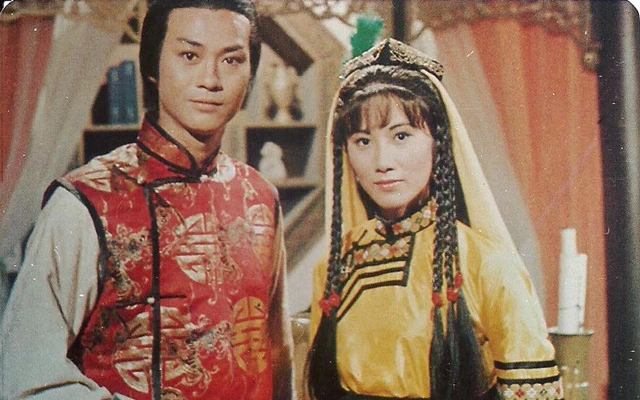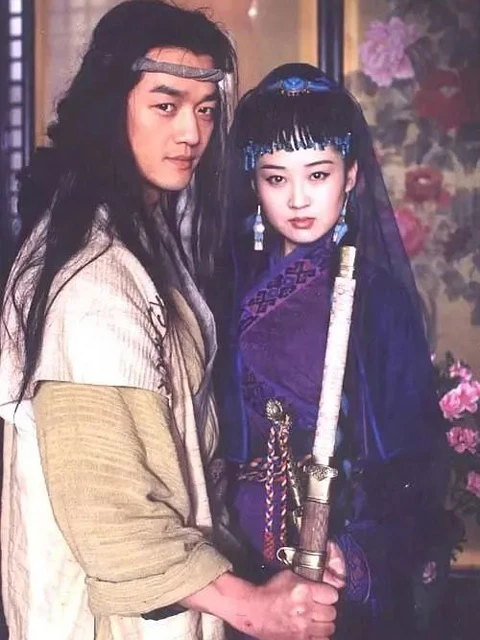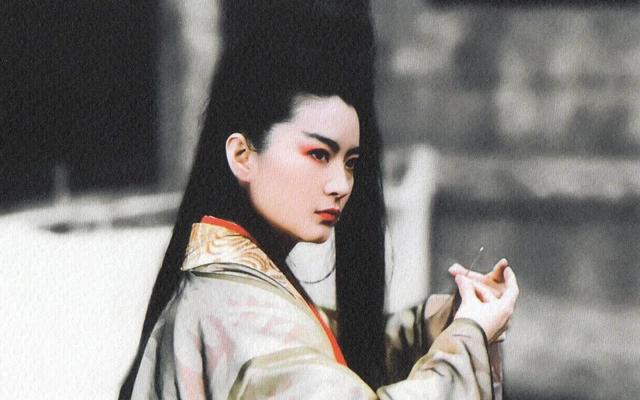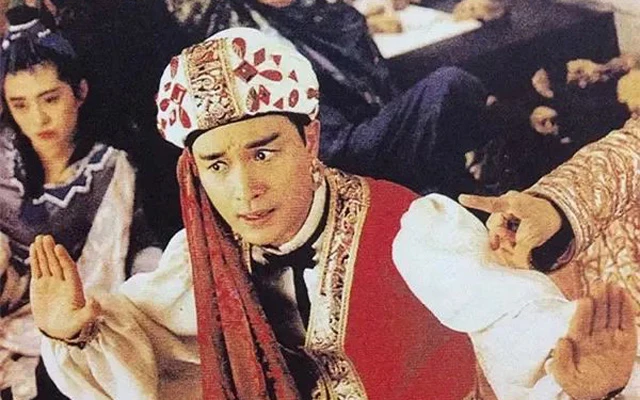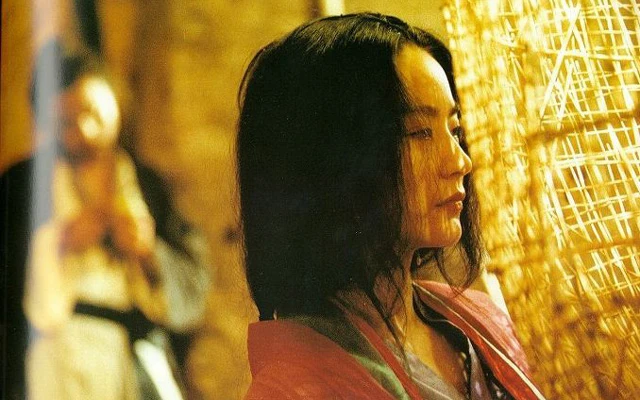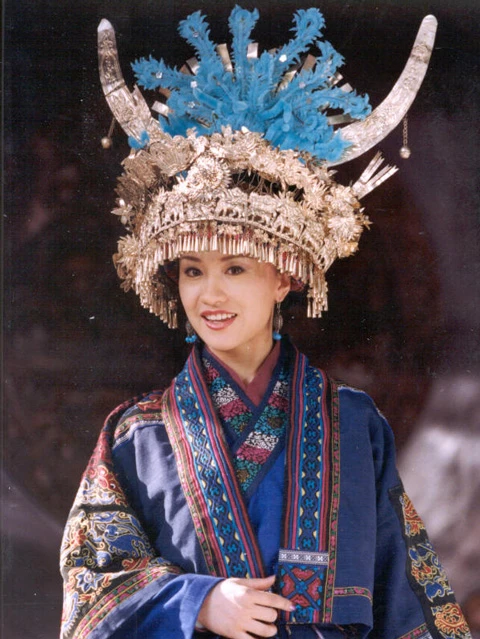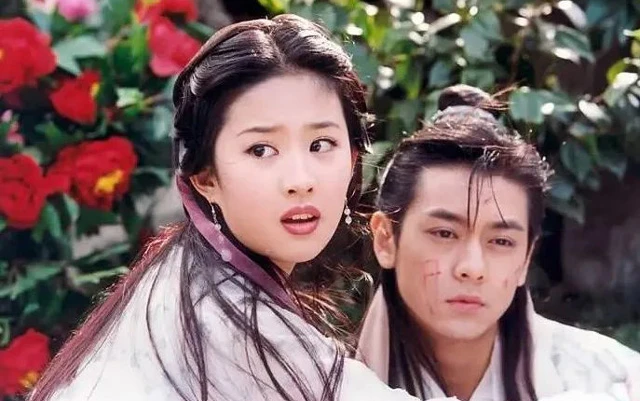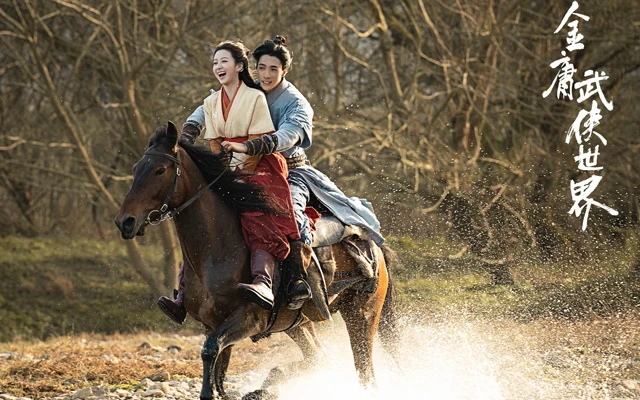In Jin Yong's world, the jianghu transcends its origins as a realm outside the law in traditional knight-errant novels, evolving into a timeless symbol of order and spirit. The role played by actual locations and scenery in live-action filming is not merely decorative - rather than being extravagant landscape promotion, it serves as a probing and revisiting of the order and chivalrous spirit of the jianghu.
As a self-contained realm of power, the jianghu has dissipated after a long period of decline. In recent years, a wave of Jin Yong dramas and films born out of the overflow of the film and television industry has made it increasingly challenging to authentically capture even the superficial aspects of the martial arts jianghu.
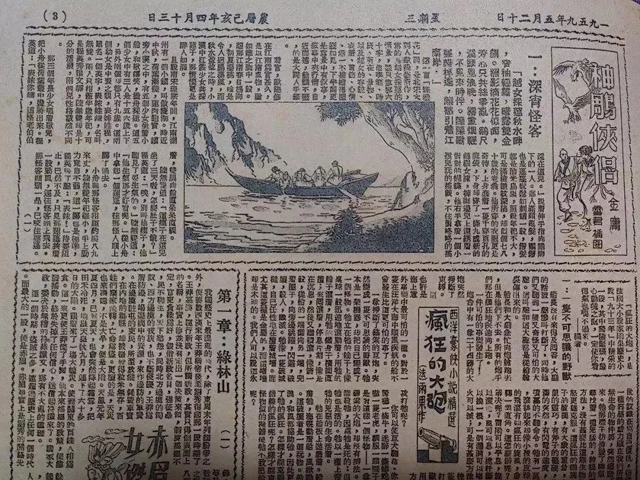
From 1957 to 1959, Jin Yong, after leaving the "Ta Kung Pao," joined the Great Wall Movie Enterprise as a screenwriter and director. His two years of foray into the film industry may be considered insignificant in his lifetime. However, in terms of the influence of Jin Yong's works in the Chinese-speaking world, the credit cannot be overlooked for the film and television adaptations based on his novels. Since the two-part film adaptation of "The Legend of the Condor Heroes" in 1958, Jin Yong's television dramas and novels have almost simultaneously gained popularity. Roughly speaking, there have been over a hundred film and television adaptations to date, many of which are revered as pinnacles of the martial arts genre.
The adaptation of Jin Yong's novels into visual media, while expanding the stories into broader time and space, also signifies a gradual distancing between Jin Yong's film and television adaptations and the original works. Particularly among younger audiences, it is not uncommon for viewers of Jin Yong's television dramas to be distinct from readers of Jin Yong's original novels. While selecting the best works from Jin Yong's novel series may not be difficult, shifting focus to film and television adaptations inevitably leads to a multitude of diverse opinions.
Just as Jin Yong adeptly intertwines real history with fictional plots, if one does not solely measure the quality of television adaptations based on their fidelity to the original works, then the various "misinterpretations," "deviations," and "elaborations" of Jin Yong's works in film and television over more than 60 years become valuable remnants of the era's influence on the jianghu genre, forming a visual historical record of the evolution of modern and contemporary martial arts concepts.
Shaw Brothers Studio & Jin Yong: From Stage combat to Wuxia
In the late 1960s, directors Hu Jinquan and Chang Che of the Shaw Brothers Studio respectively produced "Come Drink with Me" and "The One-Armed Swordsman," ushering in a new era for Hong Kong wuxia films. Setting themselves apart from the previous Cantonese wuxia films that leaned towards exaggerated theatrical forms, the "Shaw Brothers wuxia" emphasized on cinematography and authentic action scenes, offering audiences unprecedented visual spectacles.
The Shaw Brothers, established their dominance through wuxia films, took the opportunity to adapt all of Jin Yong's novels into films. Among them, Chang Che directed the most and gained the widest recognition. Although the screenwriter for "The One-Armed Swordsman" was credited to "Chang Che, Ni Kuang," the script was actually derived from the plot of Yang Guo losing his arm to Guo Fu in "The Return of the Condor Heroes."
Jin Yong once outlined 8 expectations for wuxia films in the magazine "Wuxia and History," one of which was that the fight scenes should not be excessively brutal or gory, avoiding being overly gruesome. However, the hallmark of Chang Che's films is their violent aesthetics, seeking the thrill of visceral combat scenes. Additionally, the narrative often revolves around brotherly bonds, righteous vengeance, with male characters frequently displaying their muscular physique, while female roles are often sidelined.
While this narrative style may excel in handling simple martial arts films, when faced with the intricate storylines of Jin Yong's novels, character development may become superficial, resulting in a vague portrayal of testosterone-fueled masculinity.
The Shaw Brothers' adaptations of Jin Yong's wuxia novels tend to stay faithful to the original plots, albeit leaning more towards costume action films than traditional wuxia films due to the emphasis on action scenes. This set the standard for action scenes in subsequent Jin Yong wuxia films. Ironically, half a century later, poorly executed fight scenes have become a major criticism in many new adaptations of Jin Yong's works.
Apart from the fight scenes, the Shaw Brothers' adaptations of Jin Yong's works may lack innovation, but under the umbrella of Sir Run Run Shaw's TVB, they solidified their position in the realm of wuxia dramas. The proliferation of television and the popularity of wuxia dramas went hand in hand. Founded by Sir Run Run Shaw in 1967, TVB was Hong Kong's first free-to-air television station, liberating citizens from the burden of expensive monthly fees to enjoy television programs. As a result, the number of television viewers surged significantly, with nearly 3 million viewers among Hong Kong's population of less than 5 million by the mid-1970s.
In 1972, Jin Yong retired from writing, yet his market appeal remained undiminished. There was a pressing demand from his vast readership to see his works adapted for television, and only the emerging medium of television could accommodate the vast world of Jin Yong's wuxia. Starting with Adam Cheng in "The Legend of the Book and the Sword" in 1976, TVB released Jin Yong wuxia dramas at an average rate of one to two per year. By 2000, there were no less than 30 TVB series adapted or derived from Jin Yong's novels.
Looking back now, these TVB adaptations of Jin Yong's works are not without flaws. Obvious shortcomings such as humble special effects, unconvincing sets and actors, and intrusive background music are apparent. However, these issues have not dampened the audience's fervor for TVB's Jin Yong dramas. The unprecedented attention to detail and nuanced character development have kept TVB's Jin Yong dramas ahead in reputation, with the intertwining themes of patriotism and chivalry forming a collective memory for a generation of Hong Kongers.
In this era, issues such as repetitive actors and sets have inadvertently created a synergistic effect known as the "Jin Yong Universe." By the late 20th century, the peak of Hong Kong pop music further boosted TVB's Jin Yong dramas, with songs like "Tie Xue Dan Xin," "Shi Jian Shi Zhong Ni Hao," and "A Hard Scripture To Read" becoming melodies that resonated throughout the Chinese-speaking world.
2-New wuxia symptomatic of the turn of the century
The decline of the Shaw Brothers' Jin Yong films reflects the stiffness of film art in translating Jin Yong's novels: the more they attempt to present the originality of the novels within limited screen time, the more they become estranged from Jin Yong's martial arts world. The insurmountable mediatic gap between films and Jin Yong's novels not only signifies the traditional straightforward martial arts films' failure in facing the intricate narratives of new wuxia novels but also calls for a new paradigm of wuxia films.
In 1990, "The Smiling, Proud Wanderer" produced by Tsui Hark and directed by King Hu was hailed as the "pioneering work of new wuxia films." Despite the need to simplify the narrative, the film inevitably compressed the political allegory of the original work into the martial arts disputes over the "Kuihua baodian (Sunflower Scripture)," yet its impressionistic visual and auditory effects closely align with readers' imagination of Jin Yong's martial world. The interlude "Cang Hai Yi Sheng Xiao," whether sung by Sam Hui in Cantonese or a Mandarin version performed by James Wong, Tsui Hark, and Lo Ta-yu, creates a vast ancient atmosphere through the characters Linghu Chong, Liu Zhengeng, and Qu Yang.
Following "The Smiling, Proud Wanderer," Tsui Hark subsequently released two sequels - "Swordsman II" and "The East Is Red." The former still had some connection to the original plot, while the latter was entirely Tsui Hark's personal interpretation. The casting of Brigitte Lin as Dongfang Bubai and the adaptation of a romantic relationship between Dongfang Bubai and Linghu Chong faced strong opposition from Jin Yong. Surprisingly, this bold gender portrayal was not only well-received by the audience but also gained popularity. Whether it was Brigitte Lin's portrayal of Dongfang Bubai or the use of female actors to play the role, these elements were inherited in later versions of "The Smiling, Proud Wanderer."
Tsui Hark's innovation in new wuxia goes beyond mere character experimentation and filming experiments. Perhaps even Jin Yong himself did not realize that although Tsui Hark's works did not completely transcend the genre of martial arts films, they had already touched the foundation of Jin Yong's martial narrative, namely the public nature of "martial arts" and the social nature of "chivalry," both of which uphold the highest moral law in Jin Yong's works. In Tsui Hark's Jin Yong films, the clear-cut opposition between the court and the martial world, justice and personal desires, begins to dissolve, with characters often displaying an uncertain wavering.
Outside of Tsui Hark, filmmakers in Hong Kong during this period re-examined Jin Yong's martial arts from the paths of art films and nonsensical comedies. Wong Kar-wai's "Ashes of Time" and Ann Hui's "The Romance of Book and Sword" represent the former, while Jeffrey Lau's "The Eagle Shooting Heroes" and Wong Jing's "Royal Tramp" represent the latter.
In "Ashes of Time," Jin Yong's novel is used as a background and symbol, fundamentally still a deep portrayal of the confusion of modern urbanites at the end of the century. "The Romance of Book and Sword" as the first co-produced martial arts film shot in mainland China retains the basic storyline of the original work but greatly reduces the martial arts scenes, instead reflecting public identity anxieties through the dramatic conflicts between Chen Jialuo and Emperor Qianlong.
"The Eagle Shooting Heroes" and "Royal Tramp" completely deconstruct Jin Yong's martial arts with a playful attitude. In the final work "The Duke of Mount Deer," Jin Yong himself conveys a considerable degree of self-reflexivity, and the two films starring Stephen Chow adapted from "Royal Tramp" can even be said to be more radical in their anti-martial arts stance than Jin Yong's original work. The dialogue between Chan Kan-nam and Wai Siu-bo regarding the legitimacy of the Heaven and Earth Society's "overthrowing the Qing to restore the Ming" directly undermines the ethical foundation on which the martial world is established, leaving martial arts suspended in a void of uncertainty.
3-New era of Wuxia emerges: breaking memory filters
The vitality of Hong Kong-produced adaptations of Jin Yong's works came to an end with the postmodern deconstruction of Jin Yong's martial arts at the turn of the century, but the adaptation of Jin Yong's works into film and television did not cease. On April 5, 1999, during an interview with CCTV's "Cultural Perspective" program, Jin Yong extended an olive branch to CCTV, stating that if CCTV was willing to adapt his works like they did with the "Four Great Classical Novels," he would offer any of his works for adaptation at the cost of one yuan.
In 2001, the CCTV broadcasted "Laughing in the Wind," produced by Zhang Jizhong and directed by Huang Jianzhong. Over the following decade, Zhang Jizhong went on to adapt seven of Jin Yong's novels.
Being positioned as a counterpart to the "Four Great Classical Novels" and serving as mainland China's first Jin Yong adaptation, there was great anticipation from the audience for this version of "Laughing in the Wind." However, upon its initial release, there were numerous criticisms, primarily focusing on casting choices and alterations to the storyline. The subsequent "Zhang's Jin Yong series" presented a distinct style from Hong Kong and Taiwanese martial arts dramas, with "Demi-Gods and Semi-Devils" receiving the best reception.
Looking back at the history of Hong Kong's Jin Yong adaptations, the assertion that the "Zhang Jizhong series is completely inferior to the TVB version" is evidently unfair. Over the past 20 years, the rating of "Laughing in the Wind" has increased from 5.5 to 8.5, indicating a reevaluation of the value of this series of Jin Yong adaptations as the audience's nostalgia for the Hong Kong film era fades.
In Jin Yong's original works, there is a strong moral advocacy permeating the tales. Characters in Jin Yong's stories, such as Linghu Chong and Yang Guo, who defy conventional norms, are not anti-traditional but rather non-traditional. Whether in Jin Yong's novels or his other writings, one can sense his deep sentiment towards the lost cultural traditions.
As for the extensive real-life scenery in the adaptations, it may serve as a showcase of the beautiful landscapes and substantial production resources, but it is also important to recognize that landscapes are not merely natural but are closer highly aestheticized symbols. The descriptions of landscapes in Jin Yong's novels range from the tides of the Qiantang River in Jiangnan to the solitary smoke in the desolate northwest desert. The spatial transitions drive the characters' encounters and separations, and even the passage of time is depicted in spatial forms, with each generation making their entrance and exit against the backdrop of the same scenery, as the martial world remains unchanged.
Therefore, in Jin Yong's world, the martial world evolves from being a lawless realm in traditional chivalric novels to a perpetual symbol of order and spirit. The role played by real scenery, genuine mountains, and waters is not merely decorative, it is not so much a grandiose landscape promotion as it is a questioning and revisiting of the order and chivalrous spirit of the martial world.
It is on this level that one can understand why this series of Jin Yong adaptations has become the afterglow of Jin Yong's cinematic legacy and why subsequent adaptations of Jin Yong's works have almost become synonymous with vulgar soap operas.
This, of course, involves the evolution of elements such as commerce, media technology, and audience aesthetics, but the fundamental reason lies in the martial world as a self-sustaining power space, which, after a long decline, has finally dissipated. In recent years, a batch of Jin Yong dramas and films born out of the proliferation of the film and television industry struggles to capture the essence of the martial world, which has become increasingly elusive.
